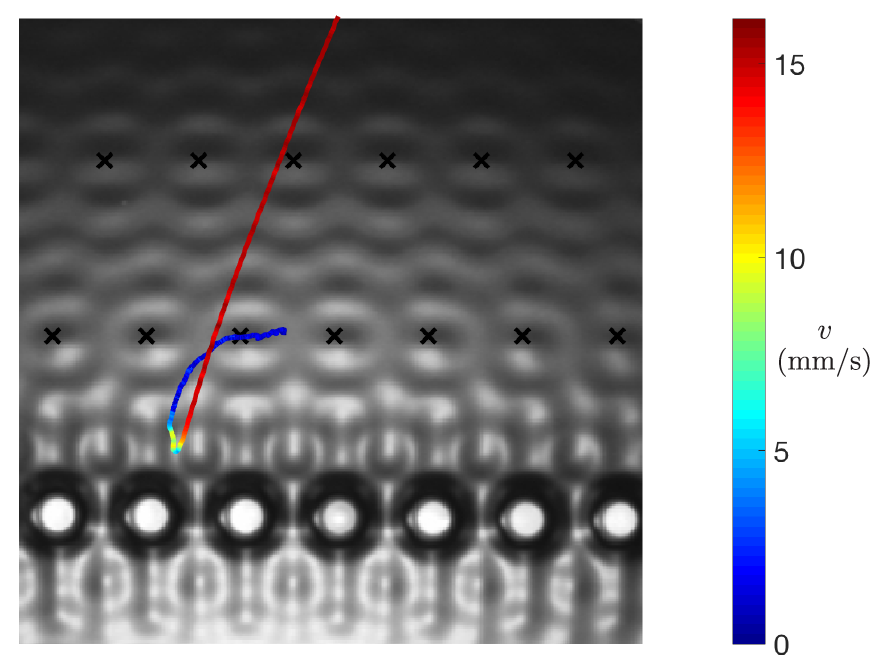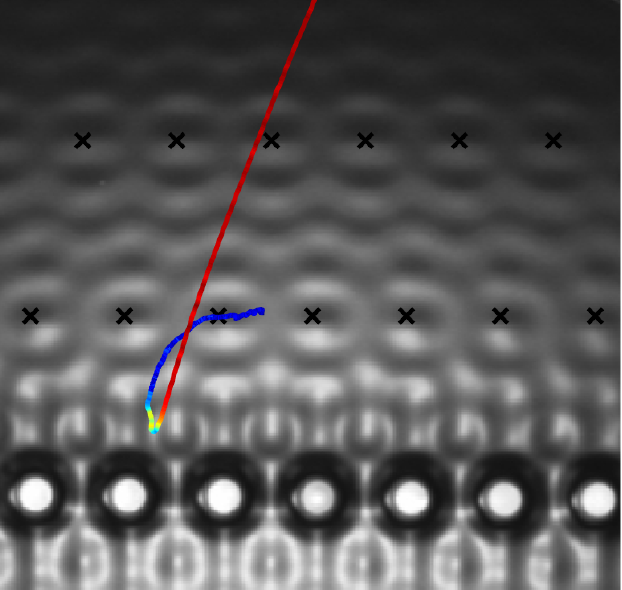
We present the results of an experimental study of the standing waves produced on the surface of a vertically shaken fluid bath just above the Faraday threshold, when a row of equally spaced pillars protrudes from the surface. When the pillar spacing is twice the Faraday wavelength, the resulting wave field is marked by images of the pillars projected at integer multiples of a fixed distance from the row. This projection effect is shown to be analogous to the well-known Talbot or self-imaging effect in optics, and a Faraday-Talbot length is defined that rationalizes the location of the images. A simple model of point sources emitting circular waves captures the observed patterns. We demonstrate that the images may serve as traps for bouncing and walking droplets.
See paper: Sungar, N., Tambasco, L.D., Pucci, G., Sáenz, P.J. and Bush, J.W.M. (2017)
